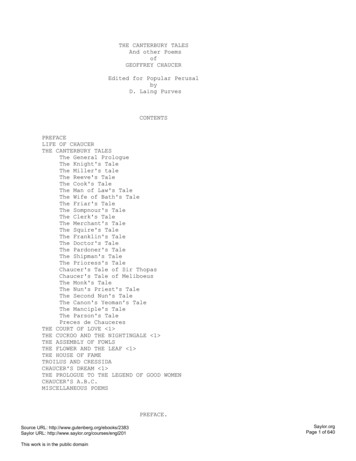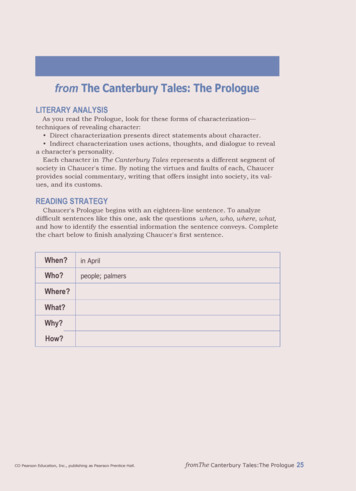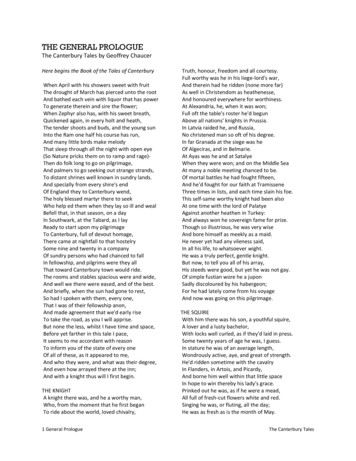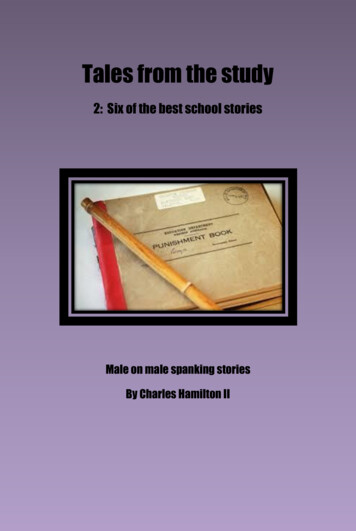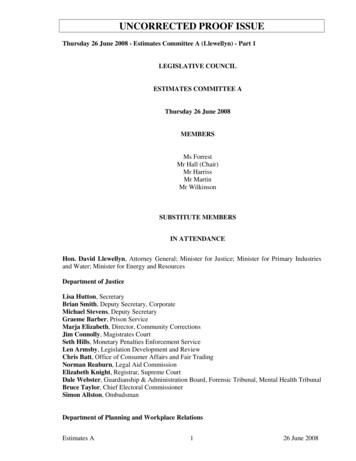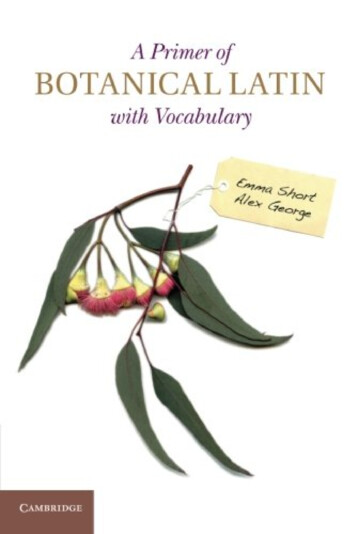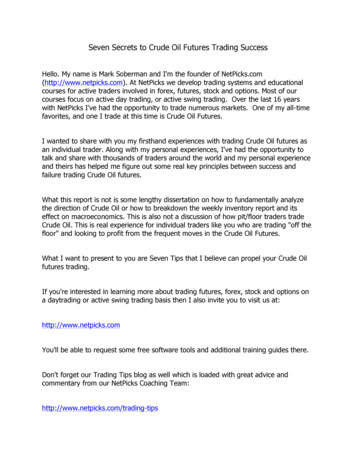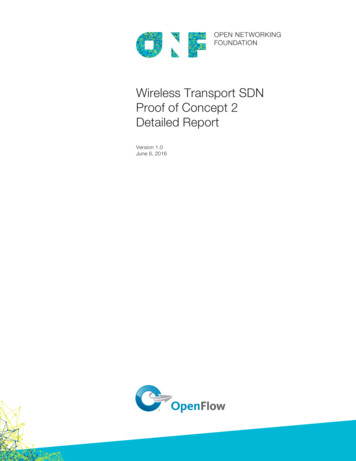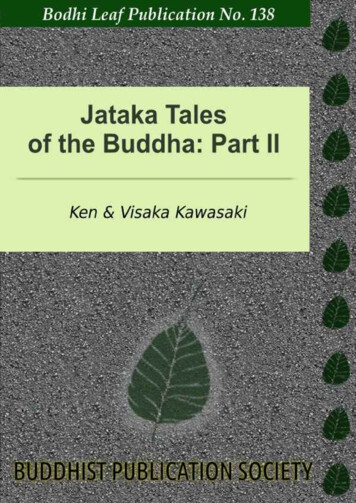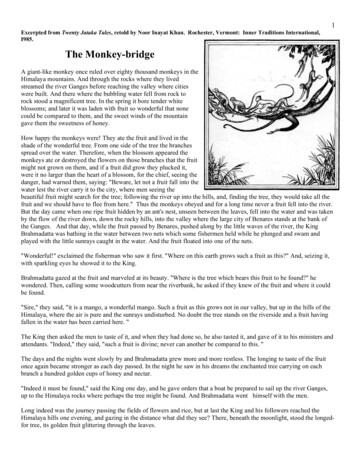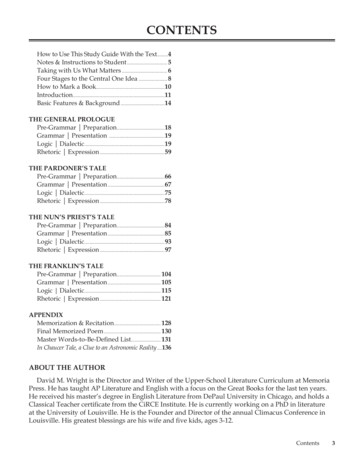
Transcription
ContentsHow to Use This Study Guide With the Text.4Notes & Instructions to Student. 5Taking with Us What Matters. 6Four Stages to the Central One Idea. 8How to Mark a Book. 10Introduction. 11Basic Features & Background. 14The General ProloguePre-Grammar Preparation. 18Grammar Presentation . 19Logic Dialectic. 19Rhetoric Expression. 59The Pardoner’s TalePre-Grammar Preparation. 66Grammar Presentation. 67Logic Dialectic. 75Rhetoric Expression. 78The Nun’s Priest’s TalePre-Grammar Preparation. 84Grammar Presentation. 85Logic Dialectic. 93Rhetoric Expression. 97The Franklin’s TalePre-Grammar Preparation. 104Grammar Presentation. 105Logic Dialectic. 115Rhetoric Expression. 121AppendixMemorization & Recitation. 128Final Memorized Poem. 130Master Words-to-Be-Defined List. 131In Chaucer Tale, a Clue to an Astronomic Reality.136About the AuthorDavid M. Wright is the Director and Writer of the Upper-School Literature Curriculum at MemoriaPress. He has taught AP Literature and English with a focus on the Great Books for the last ten years.He received his master’s degree in English Literature from DePaul University in Chicago, and holds aClassical Teacher certificate from the CiRCE Institute. He is currently working on a PhD in literatureat the University of Louisville. He is the Founder and Director of the annual Climacus Conference inLouisville. His greatest blessings are his wife and five kids, ages 3-12.Contents3
Central Quote:—Pre-Grammar PreparationPrepare to think about the poem and its Central One Ideaby drawing upon my prior knowledge, experience, or interests.1. Chaucer begins his Canterbury Tales with a General Prologue in which he presents a remarkablydiverse “portrait gallery,” a cross section of fourteenth-century English society. Think for a momentabout the many kinds of people present in our society. America, like many other countries, isa land of immigration and emigration, a land of wide-ranging diversity. Take a few minutes toconstruct a cross section of our present-day society. Who will comprise your “portrait gallery”? Listten different characters with a very brief description of each.Example:1. The businessman - wears a suit, carries a briefcase, checks stock indexes in his newspaper.18The General Prologue Pre-Grammar Preparation
2. Now that you’ve developed a portrait gallery of our society, if you were to write more lengthysketches of these individuals, whom would you satirize or be critical of, and why? Whom wouldyou elevate or grant special appreciation to?Grammar PresentationLogic DialecticDiscover essential facts, elements, and features of the poem through the reading notes, definingwords, and comprehension questions. Reason with the facts, elements, and features of the poem; sort,arrange, compare, and connect ideas—and begin to uncover and determine the Central One Idea.The Opening, Lines 1-42Reading Notes (Grammar Presentation)Note: Most of the archaic and difficult words are explained in the marginal glosses of Murphy’s readerfriendly edition; thus, the Reading Notes will feature some of the words, but not all.1. Lines 1-18 – The opening is a long, elaborate sentence about the effects of Spring on the vegetable and animalworld, and on people. The style of the rest of the Prologue and Tales is much simpler than this opening.12. Murphy’s paraphrase of lines 1-18 –When April with its sweet showers has pierced the drought of March to the root and bathed every rootlet inthe liquid by which the flower is engendered; when the west wind also, with its sweet breath, has broughtforth young shoots in every grove and field; when the early sun of spring has run half his course in the signof Aries, and when small birds make melody, birds that sleep all night with eyes open, (as Nature inspiresthem to)—then people have a strong desire to go on pilgrimages, and pilgrims long to go to foreign shores todistant shrines known in various countries. And especially they go from every country in England to seekout the shrine of the holy blessed martyr who has helped them when they were sick.3. So pricketh them Natúre in their couráges (11) – as Nature inspires them to1.Geoffrey Chaucer, The Canterbury Tales: The General Prologue & Three Tales, A Reader-Friendly Edition, Ed. Michael Murphy (Louisville, KY: Memoria Press, 2013),15. All subsequent italicized text in the Reading Notes are direct quotations of Michael Murphy's explanatory headings throughout the text.The General Prologue Grammar Presentation Logic Dialectic19
4. longen folk (12) – people long5. fernė hallows couth (14) – distant shrines known6. Lines 19-42 – At the Tabard Inn, just south of London, the poet-pilgrim falls in with a group of twenty-nineother pilgrims who have met each other along the way.7. Thomas Becket – Also known as St. Thomas of Canterbury and later Thomas à Becket. He wasArchbishop of Canterbury from 1162-1170, at which time he was murdered in the CanterburyCathedral by knights of Henry II due to a conflict with the king over the rights and privileges of theChurch. By appointing Becket as Archbishop, King Henry hoped Becket would put the governmentbefore the Church. Instead Becket became an ascetic and put the interests of the Church first.Edward Grim, who was also wounded in the attack by the assassins, reported that Becket, “at thethird blow, fell on his knees and elbows, offering himself a living sacrifice, and saying in a lowvoice, ‘For the name of Jesus and the protection of the Church, I am ready to embrace death.’”8. Canterbury – Historic English cathedral city in the district of Kent in southeast England. Becket’smurder in 1170 enlisted Canterbury as a popular destination for Christian pilgrimages.9. The Tabard Inn – The Tabard was an inn that stood on the east side of Borough High Street inSouthwark, established in 1307. It was built, in part, to accommodate the numerous pilgrimsheaded on the annual pilgrimage to the shrine of Thomas Becket in Canterbury Cathedral. In TheCanterbury Tales the Tabard is owned by the host Harry Bailey.10. That I was of their fellowship anon (32) – And was soon one with them in fellowship11. Ere that I further in this talė pace (36) – Before my tale takes a further pace12. conditïon (38) – circumstances13. And which they weren, and of what degree (40) – And who they were and of what social rank14. eke (41) – alsoWords to Be DefinedDefinitions Banka period of dryness with little or no rainapparel; clothingbrought into beingvarious; several1. The drought of March hath piercėd to the root (2)2. Of which virtúe engendered is the flower (4)3. To fernė hallows couth in sundry lands (14)4. And eke in what array that they were in (41)20The General Prologue Logic Dialectic
Read the Short Introduction to the General Prologue (pp. 20-21), and then the GeneralPrologue, lines 1-42, marking the text in key places.Comprehension Questions1. What is the distinction between March and April in the opening lines?2. List three effects of spring on the natural world found in the lines 1-11.3. What other major thing does spring bring about in lines 12ff.?4. The speaker falls in with whom on his pilgrimage? Where does he meet them?Socratic discussion questions (LOGIC Dialectic)1. Notice that the opening lines feature a movement from the sky to the roots, from the cosmic to theearthly. Why might this be significant?2. The opening lines about spring suggest the concept of rebirth. What might Chaucer be hintingneeds to be born anew?The General Prologue Logic Dialectic21
headed on the annual pilgrimage to the shrine of Thomas Becket in Canterbury Cathedral. In The Canterbury Tales the Tabard is owned by the host Harry Bailey. 10. that i was of their fellowship anon (32) – And was soon one with them in fellowship 11. Ere that I further in this
